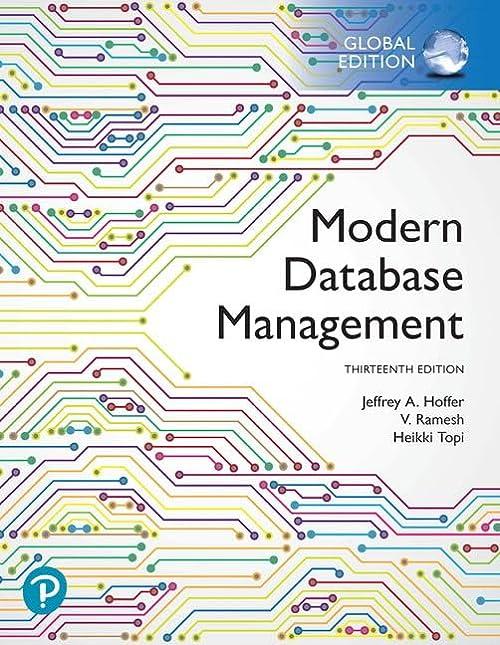Answered step by step
Verified Expert Solution
Question
1 Approved Answer
Project Details: Input: us backbone topology which consists of 2 4 nodes and 4 3 edges is given as input. The input file contains adjacency,
Project Details:
Input: us backbone topology which consists of nodes and edges is given as input. The input file contains adjacency, bandwidth, delay, and reliability matrices. The relationship between each node in these matrices is separated by : Each matrix is separated by an empty row.
In the neighborhood matrix, link distances are uniformly distributed between and
The bandwidth matrix uniform distribution is between and
The delay matrix is uniformly distributed between and
The reliability matrix is between and
Request: A request will have source node id destination node id and bandwidth requirement information.
Solution: The function, called Solution, will take the input txt file and the defined request. With the information taken as parameters, it is desired to find the shortest path between two constraints.
You have to do the requirement. When you add delay and reliability constraints to the solution, you can get additional points.
Constraints: The solution must be within the range of the specified constraints.
Bandwidth demand must be required
Delay threshold must be less than extra points
Reliability threshold must be greater than extra points
Algorithm: Three of the following algorithms must be used to solve the problem.
Dijkstra Algorithm
BellmanFord Algorithm
Algorithm
FlodyWarshall Algorithm
Additional points will be awarded for solving the problem with any of the metaheuristic algorithms specified. extra points
Simulated Annealing Algorithm
Tabu Search Algorithm
Ant Colony Algorithm
Bee Colony Algorithm
Firefly Algorithm
Explanation :
First, you should read the input file and take the parts suitable for the constraint you will use.
Then, you need to send the parameters to the method according to your request and find the path that provides the necessary constraints. If you want to find a solution for more than one constraint, you must make sure that the path found satisfies all constraints.
Each method should be written in separate methods. If you are making a solution with multiple parameters, you need to individually specify methods for each one.
Output: After running the algorithm, it should give all nodes in the calculated path.
The problem should find a solution according to the objective function given below.
min
In the given equation:
Graph G consists of vertex and edges, i and are two vertices defined in the graph and ij denotes an edge in the edge set.
bw represents bandwidth demand,
dist edge distances between i and
Project Details:
Input: us backbone topology which consists of nodes and edges is given as input. The input file contains adjacency, bandwidth, delay, and reliability matrices. The relationship between each node in these matrices is separated by : Each matrix is separated by an empty row.
In the neighborhood matrix, link distances are uniformly distributed between and
The bandwidth matrix uniform distribution is between and
The delay matrix is uniformly distributed between and
The reliability matrix is between and
Request: A request will have source node id destination node id and bandwidth requirement information.
Solution: The function, called Solution, will take the input txt file and the defined request. With the information taken as parameters, it is desired to find the shortest path between two constraints.
You have to do the requirement. When you add delay and reliability constraints to the solution, you can get additional points.
Constraints: The solution must be within the range of the specified constraints.
Bandwidth demand must be required
Delay threshold must be less than extra points
Reliability threshold must be greater than extra points
Algorithm: Three of the following algorithms must be used to solve the problem.
Dijkstra Algorithm
BellmanFord Algorithm
Algorithm
FlodyWarshall Algorithm
Additional points will be awarded for solving the problem with any of the metaheuristic algorithms specified. extra points
Simulated Annealing Algorithm
Tabu Search Algorithm
Ant Colony Algorithm
Bee Colony Algorithm
Firefly Algorithm
Explanation :
First, you should read the input file and take the parts suitable for the constraint you will use.
Then, you need to send the parameters to the method according to your request and find the path that provides the necessary constraints. If you want to find a solution for more than one constraint, you must make sure that the path found satisfies all constraints.
Each method

Step by Step Solution
There are 3 Steps involved in it
Step: 1

Get Instant Access to Expert-Tailored Solutions
See step-by-step solutions with expert insights and AI powered tools for academic success
Step: 2

Step: 3

Ace Your Homework with AI
Get the answers you need in no time with our AI-driven, step-by-step assistance
Get Started


